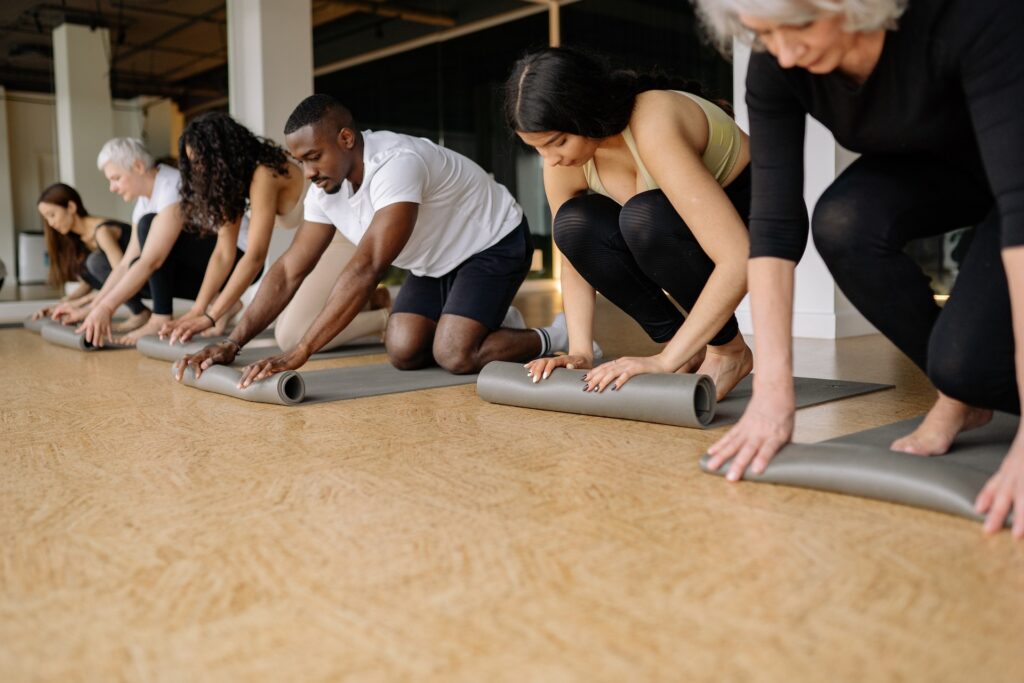
In the heart of Manhattan’s Lower East Side, nestled within the walls of a cozy brick townhouse, I would step into my cherished haven, a yoga studio that resonated with my spirit. The second-floor space held a unique allure, and I unfailingly rolled out my mat in the same corner at the back left of the room. There, an unspoken connection formed. It wasn’t mere convenience; it was an instinctive bond like a moth irresistibly drawn to the flame.
Despite the occasional inconveniences, I cherished my spot. Remaining in a state of contemplation after Savasana, I could hear fellow practitioners gathering their belongings, and once, a shoe even descended from the heavens and landed on my head.
As the rhythmic flow of the practice unfolded daily, I moved harmoniously with others in Sun Salutations and postures that demanded balance, culminating in the restful embrace of Savasana, all from my vantage point. This was my anchor amidst the waves of my day, a sanctuary within the collective rhythm.
At times, fate would play a trick, and my spot would be claimed by another. An unsettling unease would stir within, a feeling of the world temporarily losing its equilibrium. Laughter would dissolve my rigidity as I reminded myself of practicing non-attachment. Yet, the following day would unfailingly see me back in my familiar spot.
In my quest for mindfulness, a question took root: why had I gravitated towards this modest eleven-square-foot expanse of wooden floor? Why did I consistently place my mat in this specific space, transcending the boundaries of time? How many others shared this magnetic connection to a particular spot, and what did it reveal about them?
The Choice of Location
Engaging in conversations with fellow practitioners, a recurring theme emerged when discussing preferred practice spots: comfort. From those I conversed with, 38% leaned towards the front row, while the rest was evenly divided between the middle and the back rows. A significant 81% opted for a spot along the wall, seeking the sense of boundary and freedom it offered, in contrast to the 19% drawn to the center, surrounded by fellow practitioners.
Notably, few expressed a complete lack of preference, and studios have taken note. Now, some provide the autonomy for students to choose their spots before even entering the space. Much like selecting seats at a concert or when booking a flight, mat placement has become a declaration of personal preference.
Front and Center
Just as my yoga style shifted with my changing internal landscape – embracing Ashtanga for routine and restorative for tranquility – so did my mat placement adapt to my evolving needs. A year arrived when I declared it my “front row year.” Teaching yoga had fortified me, rendering me more resilient, and I sought to embrace the role of a visible student. This was my fresh perspective.
At this studio, the front row often hosted experienced practitioners, offering an unobstructed view for mastering poses and moving harmoniously. An experienced yogi could lead from the front, orchestrating the sequence with intrinsic understanding. While I appreciated the perspective, it felt like stepping onto a grand stage. An internal compass directed me back to my familiar corner at the rear, a testament to my nature as an introvert.
The Middle Path
For some, the middle row epitomized comfort, a cocoon within the collective. It embodied the essence of community immersion, where one could lose and find themselves simultaneously. It was a vantage point for absorbing the surroundings, mirroring others, and experiencing unity through shared practice.
A Haven in the Back
But then, there was the back row. Choosing this corner suggested a search for refuge, a space to remove societal masks and simply exist. For me, my yoga practice was a haven for processing grief and trauma, making the back row a sanctuary where vulnerability could be unveiled.
From this concealed spot, the dichotomy of community and solitude intertwined. A gentle upward gaze in Warrior 1 revealed an ocean of arms, a testament to collective unity within individual diversity. The back row became my cocoon, a haven to nurture my growth.
Upon reflection, I realized my unwavering bond with the back row had a purpose. It wasn’t random; it was an embrace of safety, the freedom to unwind without direct scrutiny. I began my journey into that studio wounded and introspective, aching for the camaraderie of community while seeking personal solace. The back row bestowed both.
The Power of Choice and Transformation
Amidst the ebb and flow of life’s changes, the consistency of my mat’s placement mirrored my internal transformation. A sequence beyond the asanas, it was a testament to my evolution, a map of my growth. This practice wasn’t exclusive to me; it extended to every practitioner’s choice.
In the end, it’s not the spot itself that holds the magic, but the journey to it. The question of where to lay one’s mat is a reflection of desires, needs, and intentions. Whether it’s in the front, the middle, or the back, the choice becomes a canvas for self-discovery, a tool for mindful growth.
So, as you embark on your yoga practice, ask yourself: where does your energy thrive? Do you seek leadership, unity, or solace? Wherever your mat unfurls, it’s a testament to your journey – a journey of mindfulness, intention, and transformation.